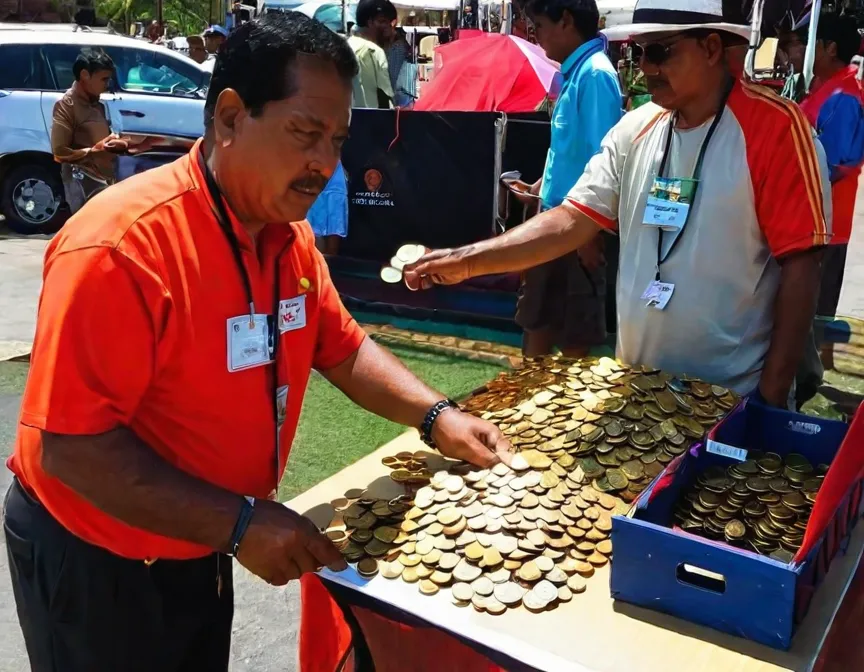ICOs: ICO Token Sales
ICO token sales are a way for blockchain projects to raise money by selling tokens. Understanding token distribution, sale mechanisms, and risks is key.

ICO Token Sales: Exploring Token Distribution and Sale Mechanisms
ICO token sales are a crucial aspect of the Initial Coin Offering (ICO) fundraising process, allowing blockchain projects to distribute and sell their tokens to investors. This section provides a detailed and example-filled explanation of ICO token sales, exploring token distribution, sale mechanisms, and associated considerations. By understanding ICO token sales, you can gain insights into the dynamics of token distribution, pricing strategies, and investor participation.
Token Distribution
Total Token Supply
The project team determines the total supply of tokens to be created, which can vary depending on the project's goals, token utility, and future plans. The total supply impacts the scarcity and value proposition of the tokens.
Token Allocation
- ICO Allocation: The portion of tokens allocated for the ICO represents the supply available for sale during the token sale event.
- Reserved Tokens: The project team may reserve tokens for future development, team members, advisors, partnerships, or marketing purposes. These tokens are typically subject to vesting periods or specific release schedules.
- Community Airdrops: Projects may allocate tokens to be distributed freely or at a reduced cost to the community as a way to foster early adoption and build a user base.
Example: In the EOS ICO, the project allocated 1 billion EOS tokens out of a total supply of 1 billion tokens for the ICO participants, with the remaining tokens distributed among various stakeholders, including the development team and early contributors.
Sale Mechanisms
Fixed Price Sales
In fixed price sales, tokens are sold at a predetermined price throughout the entire token sale event. Participants typically send the required amount of cryptocurrency to the project's designated wallet and receive the corresponding number of tokens.
Example: The Basic Attention Token (BAT) ICO offered tokens at a fixed price of 1 BAT = 0.00032 ETH. Investors sent Ether to the project's wallet and received the allocated number of BAT tokens at the predetermined rate.
Dutch Auctions
Dutch auctions start with a high initial token price, which gradually decreases over time until buyers are willing to purchase at the current price. The auction ends when the maximum number of tokens is sold, and all participants pay the same final price.
Example: The Gnosis ICO employed a Dutch auction mechanism, starting with a high token price and gradually decreasing until all tokens were sold or the auction time expired. Participants bid on the price at which they were willing to purchase Gnosis tokens.
Interactive Coin Offerings (ICOs)
Interactive Coin Offerings introduce dynamic pricing based on real-time demand. The token price changes based on the level of interest or demand from participants. This mechanism aims to achieve fairer token pricing and allocation.
Example: The Polkadot ICO utilized an interactive coin offering, where participants committed funds that were temporarily locked and released back based on the percentage of total commitments. The token price adjusted dynamically during the ICO based on the total amount committed.
Considerations and Implications
Token Pricing
Determining the token price is a critical consideration. Projects must strike a balance between offering an attractive price to investors and ensuring sufficient funds are raised to support project development.
Vesting and Lock-up Periods
Projects may impose vesting or lock-up periods on tokens allocated to team members, advisors, or early investors. This ensures a gradual release of tokens over time and aligns incentives with the project's long-term success.
Investor Participation
- Whitelisting: Projects may implement a whitelisting process where interested participants must complete a registration process to gain access to the token sale.
- Contribution Limits: To ensure wider distribution, projects may impose individual contribution limits to prevent large investors from acquiring a significant portion of the token supply.
- KYC/AML Compliance: Compliance with Know Your Customer (KYC) and Anti-Money Laundering (AML) regulations may be required, depending on the project's jurisdiction, to mitigate risks associated with illegal activities.
Conclusion
ICO token sales serve as a means for blockchain projects to distribute and sell tokens to investors, facilitating fundraising and community participation. Understanding the dynamics of token distribution, pricing mechanisms, and investor participation is crucial for students exploring the cryptocurrency and money landscape. By exploring real-world examples and considering token allocation, sale mechanisms, and associated considerations, you can develop a comprehensive understanding of ICO token sales and their implications for the success of blockchain projects.
This article takes inspiration from a lesson found in 15.S12 at MIT.